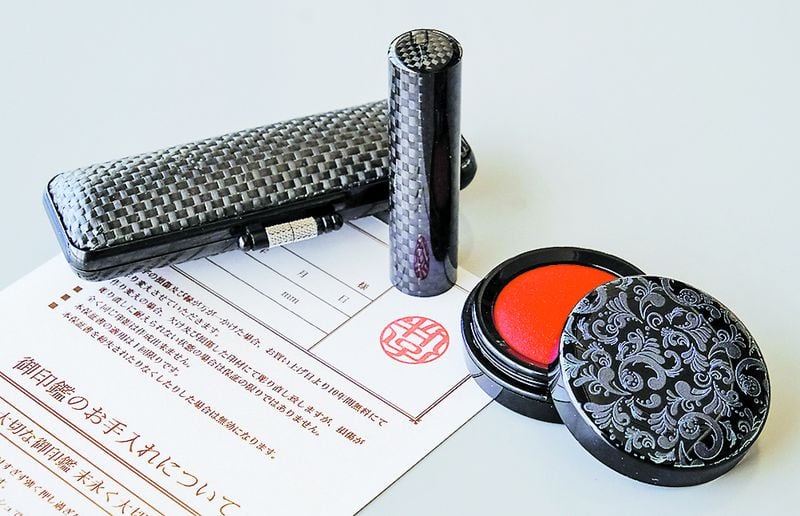Although slight developments have been observed in recent years, some brought about by the Covid-19 pandemic, the country once considered a mecca of technology, today seems anchored on articles that hardly exist anymore under other latitudes, or are used very little.
Japan is a nation of contrasts, at least when it comes to technology. In the east of the country, famous for its traditions and rites, high-speed trains, state-of-the-art robots and a collective imagination associated with modernity coexist, carried by films such as Akirabut also the use of the fax as a means of communication, telephone calls instead of voice messages and cash payments to the detriment of the use of contactless cards.
“I have customers who ask me to pay with a credit card saying they don’t have cash. I tell them to get cash from the ATM,” Ryuichi Ueki, the fifth-generation owner of Asahi, a ramen restaurant in Tokyo’s historic Asakusa district, told Al Jazeera. Neither he nor his family are interested in paying commissions or learning how digital payment machines are used, which is not a symptom of any particular case, but of an entire nation.
The use of cash
The world’s third largest economy has shown over the years that it is unwilling to change some of its traditions, including the use of cash instead of cards. While South Korea recorded that 93% of payments in 2022 were made with plastic, in Japan the figure stood at 36%, detailed Al Jazeera. According to the Ministry of Economy, Trade and Industry, this percentage has only doubled in recent years.

Fax and Hanko
The two objects are an example of the two sides of a coin: modernity (at least 20 years ago) and tradition. The fax, the object by which printed documents were sent (or are sent, in the case of Japan) over great distances, goes hand in hand with the Hanko, or personal seal. And both survive to the present day.

According to Tokyo Weekender, for 2020, the government conducted a survey measuring the number of households still having a fax. The answer was that 34% of the population still had them. In government institutions, the document submission tool – the very one that the Smithsonian museum in the United States included in its exhibition on the history of technologies in 2013, recalls the New York Times – continues to be essential to carry out many official procedures.
The Hanko, on the other hand, is the personal seal of a person with which, even today, they open bank accounts and sign packages, like a medieval letter. Although they no longer use wax, many public services still use these objects as a digital signature, once the document to be certified arrives by fax.
The CD
Symbol of an entire generation, now virtually forgotten in the West and in much of the world, the CD not only continues to be anchored in the hearts and sentimentality of the Japanese, but also in the bureaucracy.
In 2019, 70% of music-related sales were made in CD format. In 2020, meanwhile, this storage mode was still generating more sales than digital. According to Tokyo Weekender, this is because artists release albums with multiple covers and photographs on the folio that accompanies the album, which are collected by fans.
In the institutional field, the Digital Agency of Japan, the state body responsible for promoting the digitization of the Eastern nation, estimates that nearly 1,900 intergovernmental procedures depend on technologies considered obsolete in other countries, such as the use of CDs, minidiscs and even floppy disks. , reported Al Jazeera.
Presentation cards
This point might be a little more common in the West, one would think. And to some extent it does, given that ambassadors and high officials still have some of those business cards that include the person’s name, title, and contact. However, they don’t have the ceremony that the Japanese still print.
In finance, having a business card is not only welcome, it’s mandatory. Here is the exchange of cards, known as meishi koukan. In this ritual, which has delineated rules and order, the card is delivered which, according to the website specializing in Japanese culture and work, Wa-Shoku, symbolizes the very embodiment of the owner, and ruins the paper or the treated with little respect. This can result in the loss of business opportunities.
To exchange it, you must hold out the card with both hands and then humbly receive the one given to you, also with both hands. As a general rule, the highest ranked people negotiate first. Additionally, the visiting party usually initiates the ceremony.

the art of words
Unlike the giant high-definition screens of the big Western cities, in Japan we opt for drawn words, and not just for commerce. Brightly colored speech bubbles that emphasize the words people say are common on television, as a sort of caption of what they say.
Source: Latercera
I’m Rose Brown , a journalist and writer with over 10 years of experience in the news industry. I specialize in covering tennis-related news for Athletistic, a leading sports media website. My writing is highly regarded for its quick turnaround and accuracy, as well as my ability to tell compelling stories about the sport.


